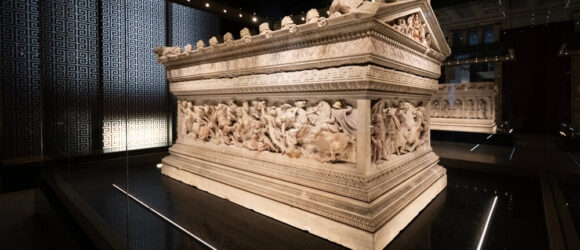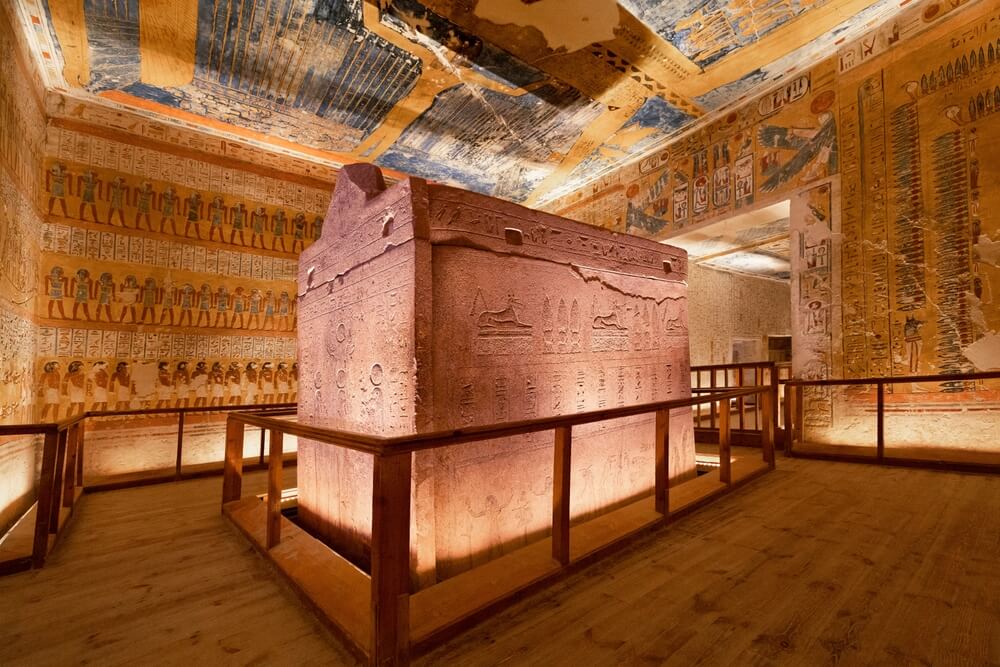What Is a Sarcophagus? From Ancient Egypt to Chernobyl’s Containment Solution

The word “sarcophagus” may conjure images of ancient kings in massive, sealed tombs. However, this fascinating structure has played many roles throughout history, from sacred burial chambers to emergency containment systems.
So, what is a sarcophagus? Let’s explore the meaning, origin of the word, and how this ancient term has become relevant in the modern world, particularly in the aftermath of the Chernobyl disaster.
Key Takeaways
- Definition and Origins: A sarcophagus is a stone coffin traditionally adorned with inscriptions or carvings. The word comes from Greek roots meaning “flesh-eating stone,” originally describing limestone believed to decompose bodies quickly.
- Cultural Significance: Ancient Egyptian sarcophagi were richly decorated and played a central role in burial rituals, intended to protect the mummy and guide the soul to the afterlife. Roman sarcophagi emphasized artistic expression, often carved with mythological scenes or family tributes.
- Modern Evolution: The term took on new meaning in the 20th century when it was applied to the concrete and steel containment structure built over Chernobyl’s damaged reactor, highlighting a shift from sacred burial to environmental protection.
- Enduring Symbolism: Across history, sarcophagi have symbolized humanity’s desire to honor the dead, preserve legacies, and safeguard the future, whether through ancient craftsmanship or modern engineering.
Sarcophagus Definition: A Tomb That Tells a Story
At its core, the definition of a sarcophagus is simple. It’s described as a stone coffin, typically adorned with a sculpture or inscription, and associated with the ancient civilizations of Egypt, Rome, and Greece.
The term comes from the Greek sarx (flesh) and phagein (to eat), translating to “flesh-eating stone.” This name originally referred to a type of limestone that was believed to decompose the body rapidly. But beyond its literal meaning, the sarcophagus represents ritual, reverence, and remembrance across civilizations.
The Egyptian Sarcophagus: Majesty and the Afterlife
No discussion of sarcophagi is complete without highlighting the Egyptian sarcophagus – arguably its most iconic form. Used by ancient Egyptians to entomb pharaohs and nobility, these massive burial containers were central to Egyptian religion and belief in the afterlife.
The earliest stone sarcophagi appeared in Egypt during the Old Kingdom (c. 2686–2181 BCE). They were carved with spells and symbols intended to guide the deceased into the afterlife. Over time, these evolved in design and detail. During the Middle Kingdom, sarcophagi began featuring more elaborate inscriptions, and by the New Kingdom, they were often painted, carved, and richly adorned with treasures.
Ancient Egyptians believed the sarcophagus protected the mummy. Protection of the body was essential for the soul’s eternal journey. In fact, a shining sarcophagus was symbolic of the deceased’s divine transformation. Food offerings, amulets, and sacred texts were placed inside to support them in the afterlife.
Roman Sarcophagi: Artistic Legacy
The use of sarcophagi didn’t end with Egypt. Roman sarcophagi, often crafted from elaborately carved marble, gained popularity during the second century CE. Unlike Egyptian sarcophagi, Roman versions frequently depicted mythological scenes, battles, or portraits of the deceased.
These sarcophagi were sometimes placed in family tombs and designed to hold multiple remains. Famous examples of both Egyptian and Roman sarcophagi are preserved in museums around the world today. The Metropolitan Museum in New York houses stunning specimens, including a painted Egyptian sarcophagus that once held three mummies, which were uncovered and studied using DNA analysis to reveal familial links.
The Chernobyl Sarcophagus: A Modern Meaning
Fast forward to the 20th century, and the word sarcophagus takes on an entirely new context. Following the 1986 explosion at the Chernobyl Nuclear Power Plant, Soviet engineers constructed a massive containment structure over Reactor No. 4—widely referred to as the Chernobyl sarcophagus.
This wasn’t a stone sarcophagus, nor was it made to honor the dead. Instead, it was a hastily built concrete and steel shell meant to contain radioactive material and prevent further environmental disaster. It functioned more like a barrier than a tomb, as it protected the world from the dangerous materials within.
The original structure deteriorated over time and was replaced in 2016 by a more secure steel enclosure known as the New Safe Confinement. Still, the Chernobyl sarcophagus remains a haunting symbol of how the term has evolved from honoring the dead to containing catastrophe.
One Word, Many Legacies
So, what is a sarcophagus? It’s more than just a coffin—it’s a legacy. From ancient Egyptian tombs to Roman artistry to modern nuclear disaster response, the sarcophagus has served as a guardian of both the sacred and the dangerous.
Whether painted, carved, or coldly utilitarian, preserving a mummy or encasing a reactor, the sarcophagus reflects humanity’s efforts to protect, preserve, and understand what we leave behind.
Preserve Your Legacy with Dignity
Whether you’re planning ahead or honoring a loved one, a custom-built mausoleum or sarcophagus offers a timeless tribute. Explore your options at Eternal Mausoleums and discover how you can create a lasting legacy.

